This isn’t about general economic inflation. Obviously, if there is any inflation in the economy, that will impact an organization’s web site maintenance costs from year to year, and organizations should plan for some kind of incremental cost increase in each piece of their web site’s costs for the new year.
But there is a different inflation going on in the web industry – and that inflation relates to the capabilities of an organization’s web site, and the importance to the organization of that web site. This increases labor costs in two ways:
The average web site has more “pieces” to it now, which requires additional expertise and management.
The average web site has more competitive value to an organization now, which requires higher management understanding of both technology and the online competitive marketplace.
The days of looking at a web site as a “flat cost” item are disappearing for most organizations wishing to have a competitive web site. Think about the functionality that your site has added in the past 5 years, and the software and hardware that you use to provide that functionality. In order for you to stay competitive, those elements have to remain competitive. That means it is either upgrading or degrading, and if it is competitive, your web site needs to keep up with it. And that’s just for what you’ve added in the past 5 years – there’s going to be more in the next five years. And everyone is feeling it, the upgrade inflation: server hosts, software providers, content providers, domain registrars, search engines, etc. It is everywhere. So it is for web developers, both those hired out of house and those hired as employees.
As web sites take root in organizations as a or THE major component of how they do business, there is not only technological evolution that occurs but an organizational evolution as well. There is a need for the organization to be adept at evaluating the external processes of the site and the internal response to those processes – billing systems must change, membership cycles can change, customer service channels evolve, even the definition of what is a customer is open to a new interpretation. This requires greater participation by informed decision makers in the environment of the Internet. This is a cost of doing business – merely the process of keeping decision makers adequately informed is a labor intensive step.
The bottom line? Your online presence obviously is going to cost you more going forward, both in identifiable fees and subscriptions, and as more hidden labor costs. Budget for it. It is a cost of doing business, as required as upgrading your facilities or your employee base. Those who fail to do so will either fall behind competitively or be continually surprised by the “project” costs of doing business online. The two areas that probably will be hardest to budget for are in-house labor costs as they can be hidden within a variety of departments, from marketing to IT to customer service, etc. And the other will be the required upgrades your competitive online presence may require, particularly in the security arena. That is why it will be critical for your organization’s decision makers to be informed as fully as possible.
